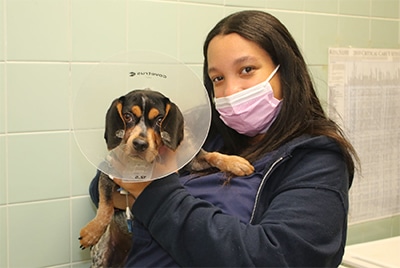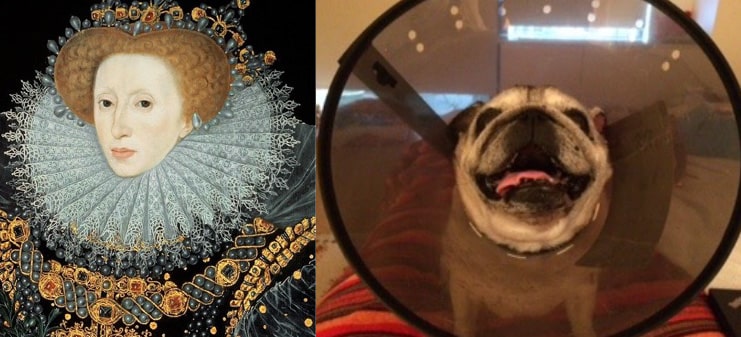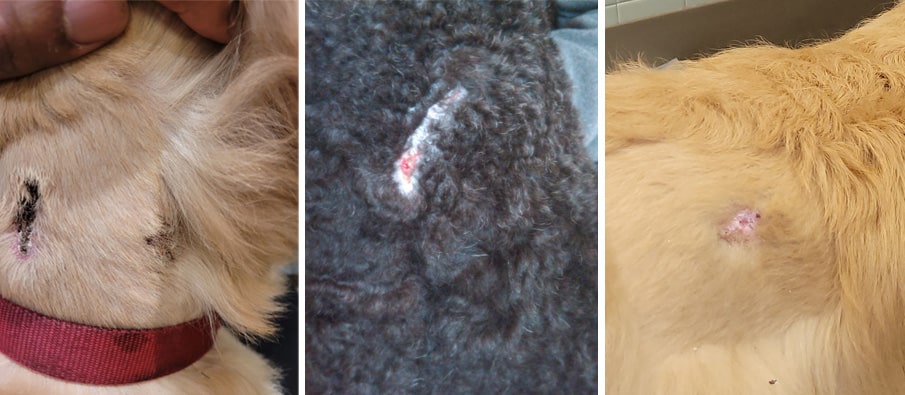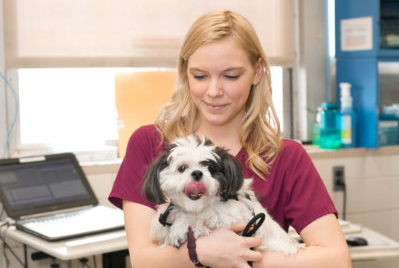Is the Cone of Shame Really Necessary?

Is the Cone of Shame Really Necessary?
Whether you know it as the cone of shame, the dreaded doughnut, the treat funnel, the pet radar dish or the eponymous Elizabethan collar, honoring a Tudor queen, this essential medical device is no one’s favorite. Yet, on a daily basis veterinarians at the Schwarzman Animal Medical Center recommend an e-collar as part of a home care protocol to protect an injury or surgical incision. A recent study looked at pet owners’ views of how wearing an e-collar impacted their dog or cat. The results are not surprising, but they warrant some discussion.
Wearing an E-collar Negatively Impacts Quality of Life
Not surprisingly, pet owners agreed the collar impeded daily activities such as eating, drinking, playing and resulted in crashes into furniture, walls and people. Some owners reported injuries related to the e-collar such as falling down stairs and minor skin irritation. Most importantly, three quarters of pet owners felt the collar decreased their pet’s quality of life.
While most pets wore an e-collar for only a few days post-operatively, others with chronic skin conditions wore them for months at a time. One creative use of the e-collar was to protect the owner from bite injury while administering an insulin injection to a needle phobic dog. The quality of life issues associated with short-term e-collar use may be more manageable than longer-term use, but the study provocatively recommends “alternative methods of preventing self-trauma should be explored.”

The Risks of Not Wearing an E-Collar Are Far Worse
This study only looks at the downside of wearing an e-collar and not the downside of NOT wearing an e- collar. I have plenty of photographs in my collection of incisions that have opened, hot spots that have been licked raw and bandages chewed off because the owner or the pet preferred not to use the e- collar. I would argue there is an even greater quality of life “cost” to the need for a second closure of an incision, a longer healing time for a hot spot or replacement of a bandage. This study doesn’t address that issue at all. Keep that in mind while you and your pet are feeling sorry for yourselves about the e-collar prescription.

E-collar Tips and Alternatives
Since protecting a surgical incision is the most common use of an e-collar, if your pet needs surgery, ask about the use of an e-collar at the time of the pre-surgery consultation. Perhaps a properly fitting post-operative recovery suit could be used in place of the e-collar. Asking early allows you time to measure and order the correct suit.
If your veterinarian says only an e-collar will do, check out The Best Dog and Cat Cones review at Wirecutter.
While your pet is wearing the e-collar, make sure to assist them with eating and drinking until they learn to navigate those vital functions with the e-collar on.
Monitor your pet while they wear the e-collar to protect them from injury and protect your woodwork and plaster from scuffs and nicks due to e-collar crashes.

































